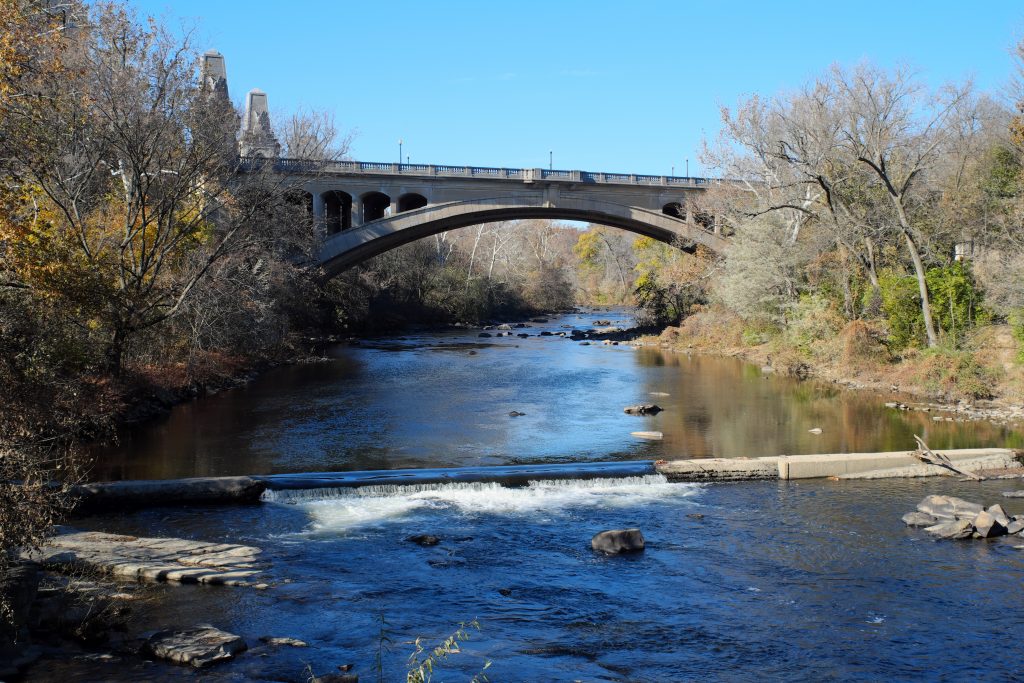
Facebook Twitter Instagram YouTube
Written on: May 17th, 2021 in Wetland Restoration
By Maggie Pletta, DNREC’s Coastal, Climate and Energy
Delaware is known for many things… like being first, Joe Biden, and horseshoe crabs. However, there are a few less flattering things that Delaware is known for, and one is a history of polluted waterways.

A large number of Delaware’s waterbodies have a fish consumption advisory, with some of the strictest advisories in place on the tidal Christina and Brandywine Rivers. But starting in spring 2021, the DNREC Watershed Approach to Toxics Assessment and Restoration (WATAR) program is looking to change that and is embarking on an initiative to improve the waters of the Christina and Brandywine Rivers
The project is titled CBR4, which stands for “Christina & Brandywine River Remediation, Restoration, and Resilience.” The goal of the project is to address legacy toxic impacts within the watershed, and within the waterways themselves, to make the rivers drinkable, swimmable, and fishable in the shortest timeframe possible.
A Long History

The Christina and Brandywine Rivers have played a pivotal role in the region’s economy and character since before the Swedes first arrived on the original Kalmar Nyckel in 1638. The river already was part of a route of warfare and trade between the Lenape (Delaware) Indians along the Delaware River (and tributaries like the Brandywine and Christina) and the Minqua (Susquehannock) Indians on the Susquehanna River to the west. When the Swedes sailed up the Delaware River and arrived at the mouth of the Christina River in Wilmington, they found an ideal port location to ship trade goods and supplies between the colonies and Sweden. Not only did the site provide easy access to shipping channels, but it also provided access to the Brandywine, where shad and shellfish abounded. Unfortunately, like many natural resources, as more colonists arrived, the rivers slowly became polluted.
During the industrial revolution, the Christina and Brandywine riverfronts became populated by heavy industry, including shipbuilding, tanneries, and chemical factories. While these industries provided jobs for many, they also left heavy metals, polychlorinated biphenyls (PCBs), and other hazardous substances in the soil and waterways. Many of these are considered persistent, bio-accumulative, and toxic (PBT) compounds. As industries slowly shifted out of Wilmington, they left behind their toxic legacy. Neighborhoods that had developed along these rivers remained, and residents were subject to the environmental and economic impacts of this legacy.
Why now?

In the 1990s, the state and federal government began to remediate the many brownfields and superfund sites along the rivers. While there have been successes, there is still a long way to go until the rivers are swimmable, fishable, and drinkable again.
Thanks to decades of this previous work, the clean-up of many of the land-based pollutant sources have been completed, and concentrations of PBTs in the water and fish have been dropping. The time is now to begin the long planning process to clean up the waterways’ sediments while the last remaining land-based sources of pollutants are controlled.
Over the next two years, the WATAR team and the Delaware Coastal Program, Christina Conservancy, American Rivers, Brightfields Inc., Sarver Ecological, and the Delaware Nature Society will be creating a comprehensive plan to combine sediment remediation with ecological restoration/coastal resilience projects within the CBR4 project area.
Upon completion, the WATAR team will begin the more extended, arduous task of implementing the plan’s actions. While potentially complex and daunting, the team is ready and eager to lead the charge to return the Christina and Brandywine Rivers to their former glory.
For more information about CBR4, visit https://dnrec.alpha.delaware.gov/waste-hazardous/remediation/watar/.